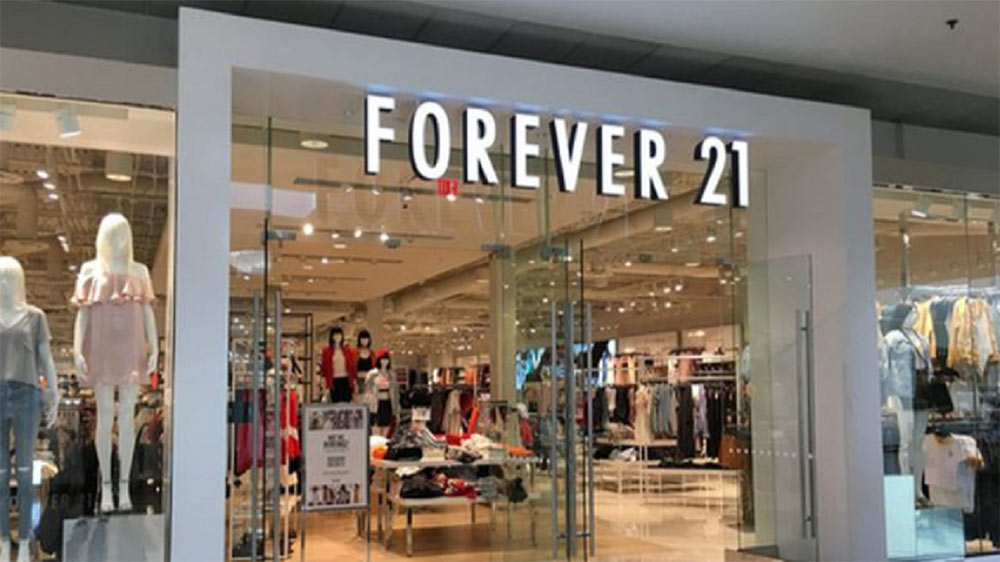Last September, Forever 21 made a public notice and leaving some doubts and interesting lessons behind. Founded in 1984 by Do Wong Chang and Jin Sook, his wife who liked to be called Mrs. Chang. They focused on a large range of fast fashion style clothing. Stores received new items almost every day, sometimes designer’s knock off – leading to some trials for not complying with intellectual property- with competitive prices, almost everything under $60. This helps them boost their global growth: as of November 2010, while many stores closed their doors, they landed in Manhattan, opening their 5th Av. Store with a DJ and games. Later, they’d opened the Causeway Bay’s store in Hong Kong with a $1,4 million rent a month, still lower than their 50000ft in Fresno, California. In the following years, London, Beijing, Shanghai, Tokyo, Manila, Praga, Bucarest, Varsovia, Beirut, Cape Town, Sydney, Mexico, Rio de Janeiro, Santiago de Chile, and Montevideo joined the list with 200 stores in 43 countries. As of 2014, the 722 stores profited for $4000 million, but in 2016, troubles were already rising.
Starting with the online experience: it wasn’t easy nor fun, something that retailers preferred but clients resented. Management was in a few hands, Mrs. Chang and Mrs. Ok (another south Korean couple very close to the Chang’s) and a 20 people team in LA, this reflected in the fast rotation of experienced executives.
Reaching 800 stores in 50 countries calls for some discipline and procedures to properly supply each store. Budgets didn’t match the previous sales, but Chang’s and Oks instincts. Coats were sent to every store even when it was summer, some pieces could be too revealing for the Middle East or too big for Asia. There wasn’t a product plan for each market and there wasn’t a concern for sustainability or younger customers losing interest in fast fashion and malls. Other times, the stores didn’t have the time to organize new products that just stacked on dressing rooms until they were returned to the distribution center where they’d go out of sight. Some other times, suppliers didn’t charge for returned goods or had payment issues.
Rumors have it, Simon Property Group and Authentic Brands, Nautica, Juicy Couture, Aeropostale, Nine West, and Sports Illustrated magazine owners, want to buy Forever 21, who is already closing stores and in a short time would run out of funds to keep running. It’s the second try for Simon Properties, each year they receive more than half of the company’s $450 million rent payment. Last July, conversations seized as the Chang’s stated they wanted to still run their business. It is possible, today they are willing to reconsider, after closing several stores and being near bankrupt if their creditors don’t approve their plans.
In times of accelerated change, the punctilious area is more exposed. It’s mandatory to focus on four key elements:
1- Keep close and ongoing contact with clients. Knowing their conversations to understand the choice changes and new trends, offering a new shopping experience that allows fluid interaction between on and offline. Make shopping easier, when and where they want to, is also a way to stay ahead of today’s changing trends.
2- Focus on adding value to the customer. Taking care of the value a customer has throughout its life is essential for any retailer who wants their brand to survive through market changes. In this sense, adjusting supplies, categories, services, and communication to establish valuable relations with customers.
3- Maximize assets rotation. Stores, inventory, employees are the main assets at stake, and ensuring their full contribution is key to be competitive in a market opened by the digital revolution who is responsible for the downfall of those who don’t have enough discipline to manage their business. Logistics is a key activity, minimizing movements and maximizing rotation, the relationship with suppliers is a way of creating value. The trick is to align the supply chain procedure from manufacturers to stores, to clients.
4- All of this needs technology, for back up procedures and customer care. Ensuring the first to maximize the value creation while taking care of customers to build long-lasting relationships to strengthen the brand. Retailing’s digital transformation means finding the balance between support systems and digital evolution for the user’s online experience.
It’s been a while since retailers have started to grow out of stores. Combining on and offlines operations, offering an extended experience before, after, and during the sale is imperative today. There is no room nor advantage to hand off to players who are entirely based online, who can do personalized offers thanks to logistic and value chains aligned with the support of technology. Retailing future is a merge between online and offline, but only those who understand and can transform their company in this sense can keep operating in a different scenario than the one who saw them grow.
These topics will be discussed in depth at the on-lin/off-line retail management program, aimed at the senior director of retailment stores that want to align themselves to these practices, combining offline strategies with online development. Over the course of three days, we’ll work on strategic development models and retailer management. We’ll analyze trends and support tools for online retailing management. The next issue will start on May 18th in Madrid, Spain IESE Business School offices.
Guillermo D’Andrea is a Retail Management professor at IESE Business School in Argentina and Spain.


